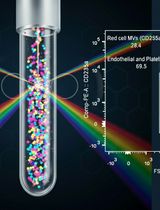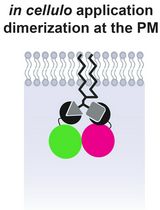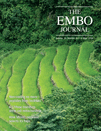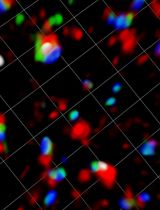- Submit a Protocol
- Receive Our Alerts
- Log in
- /
- Sign up
- My Bio Page
- Edit My Profile
- Change Password
- Log Out
- EN
- EN - English
- CN - 中文
- Protocols
- Articles and Issues
- For Authors
- About
- Become a Reviewer
- EN - English
- CN - 中文
- Home
- Protocols
- Articles and Issues
- For Authors
- About
- Become a Reviewer
Assessing Mitochondrial Transport via Cytoplasmic Nanotubular Bridges in Cells
Published: Vol 5, Iss 15, Aug 5, 2015 DOI: 10.21769/BioProtoc.1542 Views: 9108
Reviewed by: Arsalan DaudiAnonymous reviewer(s)

Protocol Collections
Comprehensive collections of detailed, peer-reviewed protocols focusing on specific topics
Related protocols

Protocol for the Isolation and Analysis of Extracellular Vesicles From Peripheral Blood: Red Cell, Endothelial, and Platelet-Derived Extracellular Vesicles
Bhawani Yasassri Alvitigala [...] Lallindra Viranjan Gooneratne
Nov 5, 2025 1329 Views

Lipid-Mediated Sequential Recruitment of Proteins Via Dual SLIPT and Dual SLIPTNVOC in Live Cells
Kristina V. Bayer and Richard Wombacher
Nov 5, 2025 1485 Views
Abstract
This protocol aims to study intercellular transport of mitochondria, dynamic cellular organelles via tunnelling nanotubes (TNT), a cell membrane extension of cytoskeletal elements. The nanotubular bridges or the tunnelling nanotube highways are one of the emerging new cell-to-cell communication systems which mediates exchange of cellular materials, most importantly as in our observation, mitochondria. Mesenchymal stem cells (MSC) have been well studied to be endowed with a highly efficient intercellular mitochondrial donation ability and this property is now proven crucial to its functional role of rescue in cellular therapy.
Keywords: Mitochondrial transferMaterials and Reagents
- Cells
Mesenchymal stem cells (Human or Mouse derived in passage 3-7), any fibroblasts cell lines (HSMC, 3T3) or primary cells. Even epithelial [BEAS-2b (ATCC, catalog number: CRL-9609 ), NHBE (Lonza, catalog number: CC-2540 ), A549, LA-4, MLE- 12] and endothelial cells (HUVEC) also show such capacity but at comparatively minimal efficiency. - Reagents
- CellLight® Mitochondria-GFP, BacMam 2.0 (Life Technologies, catalog number: C10600 )
- CellLight® Mitochondria-RFP, BacMam 2.0 (Life Technologies, catalog number: C10505 )
- MitoTracker® Green FM (Life Technologies, catalog number: M7514 )
- MitoTracker® Deep Red FM (Life Technologies, catalog number: M22426 )
- Alexa Fluor® 594 phalloidin (Life Technologies, catalog number: A12381 ) or fluorescein phalloidin (Life Technologies, catalog number: F432 )
- Alexa Fluor® 488 phalloidin (Life Technologies, catalog number: A12379 )
- 2% paraformaldehyde (SigmaAldrich, catalog number: P6148 ) diluted in 1x PBS
- ProLong® Gold Antifade Mountant with DAPI (Life Technologies, catalog number: P36931 )
- Respective cell culture media
- DMEM (Sigma-Aldrich, catalog number: D5523 ) + 10% FBS for Human MSC (HuMSC), Fibroblasts 3T3, A549
- Mouse MesenCult™ (STEMCELL Technologies, catalog number: 05512 ) for mouse MSC
- Ham’s-F 12 (Sigma-Aldrich, catalog number: N6760 ) + 15% FBS for LA-4, MLE- 12
- BEGM (Lonza, catalog number: CC3170 ) for NHBE and BEAS-2b
- M-199 (Sigma-Aldrich, catalog number: M2520 ) + 15% FBS (Life Technologies, InvitrogenTM, catalog number: 10270 ) for HUVECs (primary cultured)
- DMEM (Sigma-Aldrich, catalog number: D5523 ) + 10% FBS for Human MSC (HuMSC), Fibroblasts 3T3, A549
- TritonX-100 (Sigma-Aldrich, catalog number: T9284 )
- 1x phosphate buffer saline (PBS)
- CellLight® Mitochondria-GFP, BacMam 2.0 (Life Technologies, catalog number: C10600 )
Equipment
- Lab-tek II Chambered Coverglass w/cover #1.5 Borosilicate Sterile (Sigma-Aldrich)
- 75 x 25 mm microscope slides (J. Melvin Freed Brand)
- 22 x 22 Esco microscope square cover glass with no. 1 thickness (Erie Scientific Company)
- Live cell fluorescent microscope (Leica Microsystems, model: DMI6000 )
- Confocal microscope (Leica Microsystems, model: TCSSP5 )
- BD FACS Aria (BD Biosciences)
- BD FACS Calibur (BD Biosciences)
Procedure
- Sample preparation
- The typical cells (e.g. Human MSC or HuMSC and BEAS-2b) must first be grown separately and differentially transfected (with 20 µl volume for approx 30,000 cells seeded) either of CellLight® Mitochondria-GFP, BacMam 2.0 and CellLight® Mitochondria-RFP, BacMam 2.0. After 24 h, the respective cells are then co-cultured. Alternatively they can also be stained with 2 μl/ml (of cell growth media) from 100 μM stock solution of Mitotracker dyes for 10-20 min in 37 °C before the coculture (e.g. HuMSC with MitoTracker® DeepRed and BEAS-2b with MitoTracker® Green).
- Post dye-incubation, the cell media containing the dye is washed using 1x PBS and fresh cell growth media is added.
- For live cell imaging of monoculture population, the cells stained either of the mitotracker dye can also be stained with phalloidin (F432, Invitrogen or A12381, Invitrogen) 1:250 in PBS to view the actin constituted TNT.
- The cells have to be seeded in 2- or 4-chambered slides for live cell image acquisition (about 10-30,000 cells in each well). In case of co-cultured cells, respective growth media has to be added in equal volumes. The two types of cells are seeded in equal ratio and post 3-4 h of co-culture, mitochondrial donation can be observed.
- For fixed cell immunocytochemistry, the stained cells have to be reseeded onto cover glasses. Wash and wipe cover glass with 70% ethanol and place them in each well of a 6-well plate. Seed 30,000 cells in each well for monocultures or equi-ratio of co-cultures and then can proceed on with the staining. The cells have to be fixed in 2% paraformaldehyde (in 1x PBS) for about 20 min at RT or overnight at 4 °C and phalloidin staining (20 min incubation) can be done post permeabilization (permeabilization buffer: 0.1% TritonX-100 in PBS for 15 min) . The cover glass with the cells have to be finally mounted on glass slides with ProLong® Gold Antifade Mountant with DAPI. The edges of the cover glass are sealed with nail enamel.
- For FACS quantification of mitochondria transported, the differentially stained co-cultured cells have to be trypsinized (0.125% Trypsin+ 0.01 M EDTA) and cell pellet obtained has to be diluted in PBS or FACS buffer for acquiring.
- The typical cells (e.g. Human MSC or HuMSC and BEAS-2b) must first be grown separately and differentially transfected (with 20 µl volume for approx 30,000 cells seeded) either of CellLight® Mitochondria-GFP, BacMam 2.0 and CellLight® Mitochondria-RFP, BacMam 2.0. After 24 h, the respective cells are then co-cultured. Alternatively they can also be stained with 2 μl/ml (of cell growth media) from 100 μM stock solution of Mitotracker dyes for 10-20 min in 37 °C before the coculture (e.g. HuMSC with MitoTracker® DeepRed and BEAS-2b with MitoTracker® Green).
- Flurimetric quantification
The FACS Calibur/ FACS Aria was used to acquire a quantitative estimate of mitochondria transported by MSC. The count of mitochondria (as labeled in MSC) transported into epithelial or other specific gated population of cells is thus determined. - Image acquisition
The image acquisitions can be done with either 63x or 100x objective and TNT can be imaged with DIC view. The various dyes and respective lasers with excitation and emission range are tabulated as follows:Dyes/Probes Lasers Excitation Emission MitoGFP ARGON 488 nm 500-540 nm MitoRFP DPSS 561 584 nm 580-620 nm Mitotracker green ARGON 488 nm 500-540 nm Mitotracker red DPSS 561 575 nm 580-630 nm
Recipes
All reagents, probes and dyes were re-constituted in and as mentioned in procedures or as per manufacturer’s protocol.
Acknowledgments
This research work was supported by grants MLP 5502 and BSC 0403 from the Council of Scientific and Industrial Research, Govt. of India.
References
- Ahmad, T., Aggarwal, K., Pattnaik, B., Mukherjee, S., Sethi, T., Tiwari, B. K., Kumar, M., Micheal, A., Mabalirajan, U., Ghosh, B., Sinha Roy, S. and Agrawal, A. (2013). Computational classification of mitochondrial shapes reflects stress and redox state. Cell Death Dis 4: e461.
- Ahmad, T., Mukherjee, S., Pattnaik, B., Kumar, M., Singh, S., Kumar, M., Rehman, R., Tiwari, B. K., Jha, K. A., Barhanpurkar, A. P., Wani, M. R., Roy, S. S., Mabalirajan, U., Ghosh, B. and Agrawal, A. (2014). Miro1 regulates intercellular mitochondrial transport & enhances mesenchymal stem cell rescue efficacy. EMBO J 33(9): 994-1010.
Article Information
Copyright
© 2015 The Authors; exclusive licensee Bio-protocol LLC.
How to cite
Readers should cite both the Bio-protocol article and the original research article where this protocol was used:
- Mukherjee, S., Ahmad, T. and Agrawal, A. (2015). Assessing Mitochondrial Transport via Cytoplasmic Nanotubular Bridges in Cells. Bio-protocol 5(15): e1542. DOI: 10.21769/BioProtoc.1542.
- Ahmad, T., Mukherjee, S., Pattnaik, B., Kumar, M., Singh, S., Kumar, M., Rehman, R., Tiwari, B. K., Jha, K. A., Barhanpurkar, A. P., Wani, M. R., Roy, S. S., Mabalirajan, U., Ghosh, B. and Agrawal, A. (2014). Miro1 regulates intercellular mitochondrial transport & enhances mesenchymal stem cell rescue efficacy. EMBO J 33(9): 994-1010.
Category
Cell Biology > Cell-based analysis > Flow cytometry
Cell Biology > Cell imaging > Live-cell imaging
Cell Biology > Cell staining > Organelle
Do you have any questions about this protocol?
Post your question to gather feedback from the community. We will also invite the authors of this article to respond.
Share
Bluesky
X
Copy link












